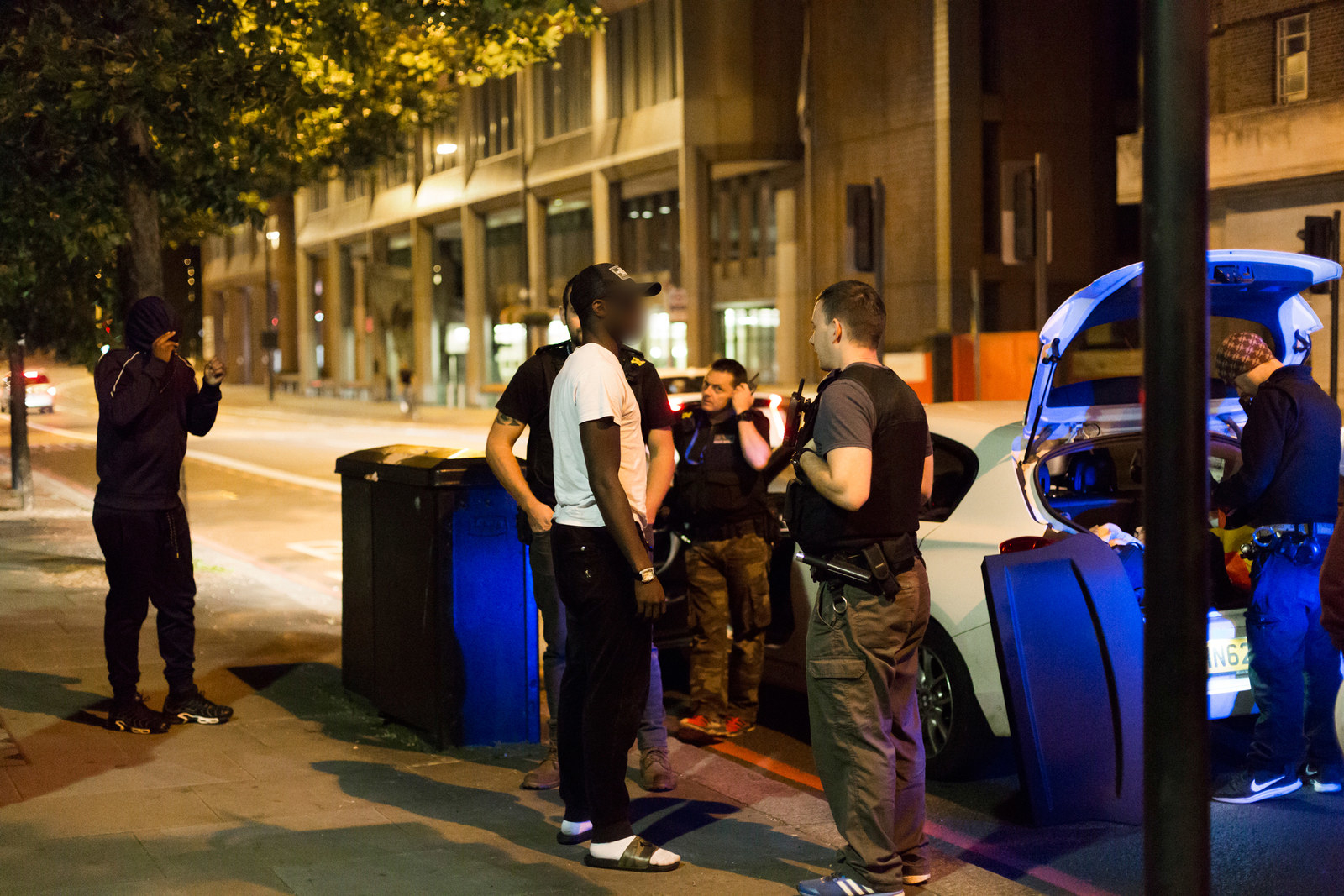It's Friday night in Lambeth and the London borough's gang squad is out on the streets. The team of men and women patrol gang territory daily in plain clothes and unmarked cars, looking to take weapons off the streets before they can be used to cause harm.
Gun and knife crime in London has soared by 42% and 24% respectively over the last year, much of it linked to the city's criminal gangs.
In a bid to tackle the growing problem, Scotland Yard has a series of elite gang units working in problem hotspots who keep tabs on London's gangs and work to disrupt their activity.
Many of the officers have been in the Lambeth unit long enough to have seen those they are now stopping regularly grow up from children into adults. They patrol the same streets, week in, week out, and can spot known gang members from a hundred yards away.
It works both ways – those they are looking out for know the officers by sight too. They know what the officers' cars look like, even what their registration plates are.
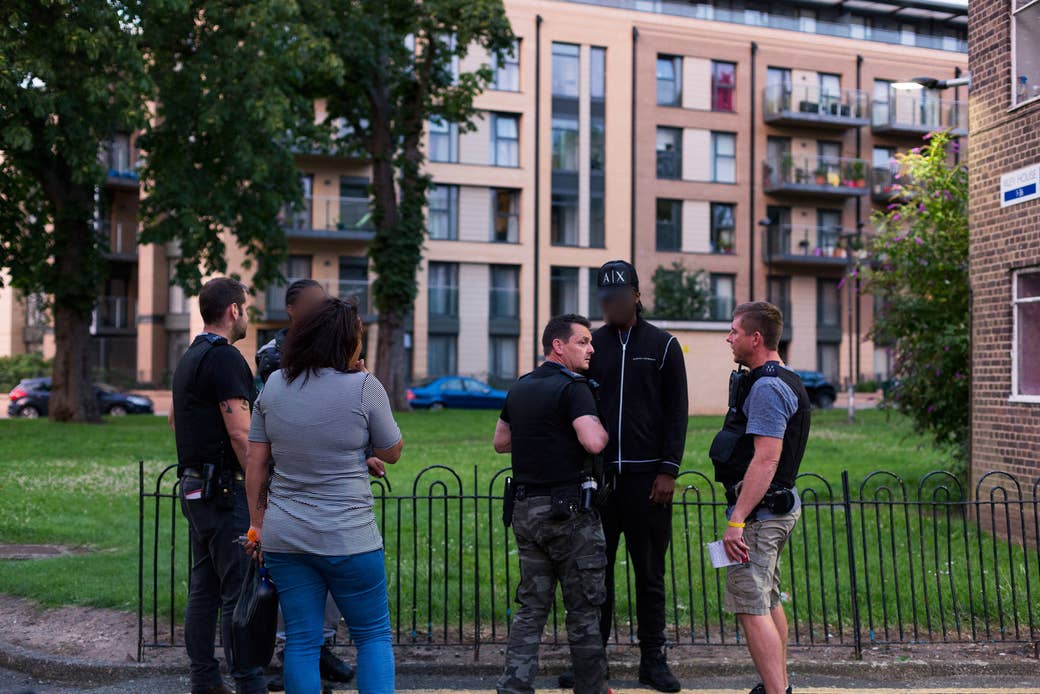
Tonight, the unmarked patrol car pulls into the New Park Road estate, where the 67 gang operate. The officers see two men get out of a car. On spotting the police, the men change direction. This is enough to arouse suspicion.
"You don't notice plainclothes police unless you've had a lot of dealings with the police," PC Scott Williams says.
The team work in unison, with cars closing in from all sides to stop their targets from getting away. As suspected, one of the men is a known associate of the 67 gang, who has been caught with a knife in the past.
When he asks why he's been stopped, he's told: "We've stopped you [before] and we've found something, and then when you start acting like that we'll stop you again."
But the exchange is not hostile, and neither of the men are handcuffed. Although they're unhappy that they're being searched, they seem resigned to the situation and manage to laugh with police. One of the men is in the army and has never been in trouble, and this time his friend has nothing on him either, and soon they are free to go.
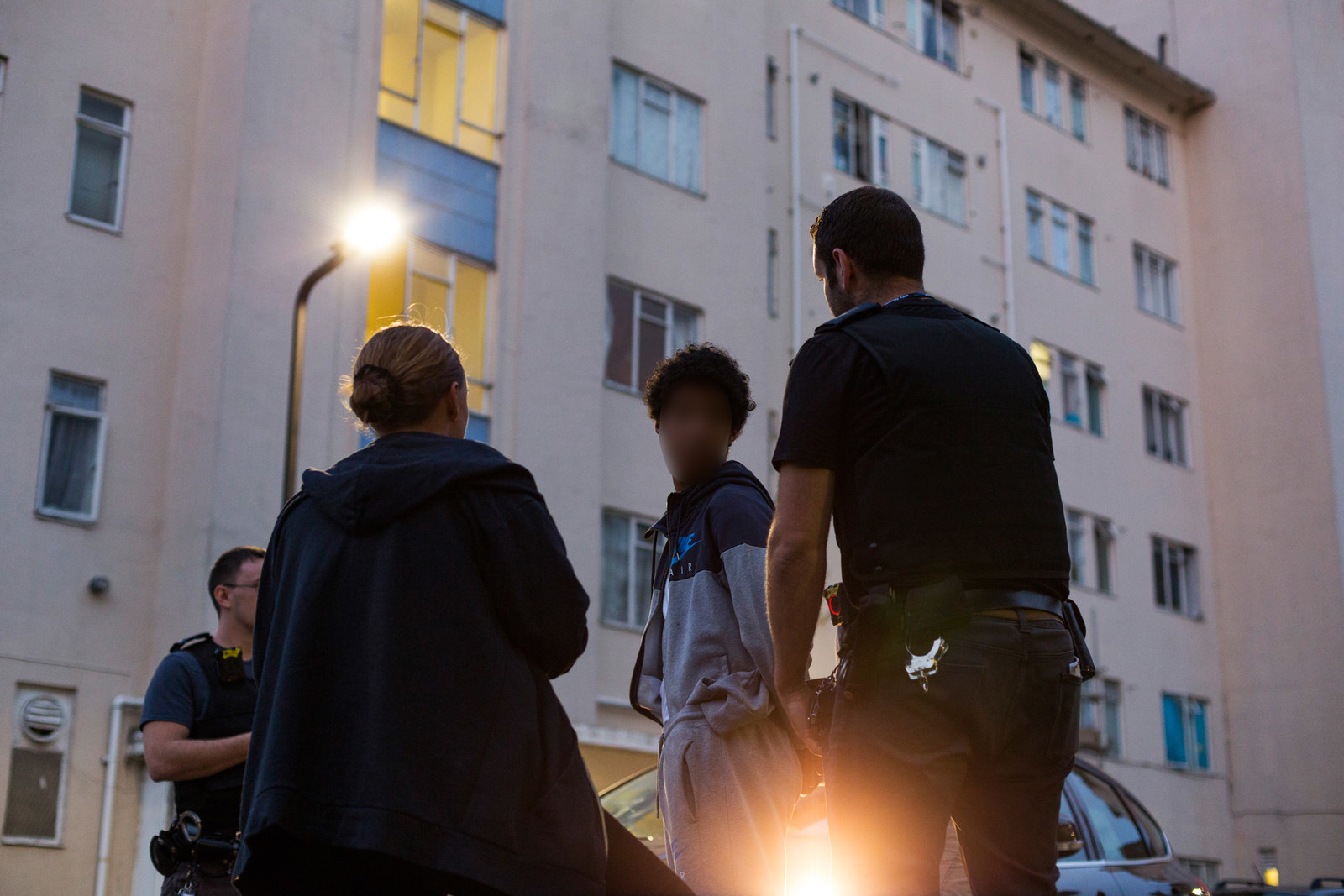
On the way out of the estate, a call comes in on the radio: One of the other cars has spotted a group of gang associates on bikes. They shot off at the sight of police, but Williams manages to stop one of them in his tracks.
He is on bail for carrying out an aggravated burglary with a knife, and police want to know why he was so eager to get away. They put the teenager in handcuffs, and he claims he just doesn't like being stopped by police.
"There are different variables that determine use of force," Williams' partner says. (Use of force includes putting a compliant suspect in handcuffs.) "Body language is more important than knowing their name. That's what keeps us safe really. When someone is up in your face, that's when your pulse rises."
The officers' job is a tough one – every suspect they stop is potentially armed with a weapon that could be used to harm them. But at the same time, they want to build up trust on the streets they patrol daily.
"It doesn't always have to be hostile," Williams says. "They know we're doing our job, they know what the consequences are if they're found with something."
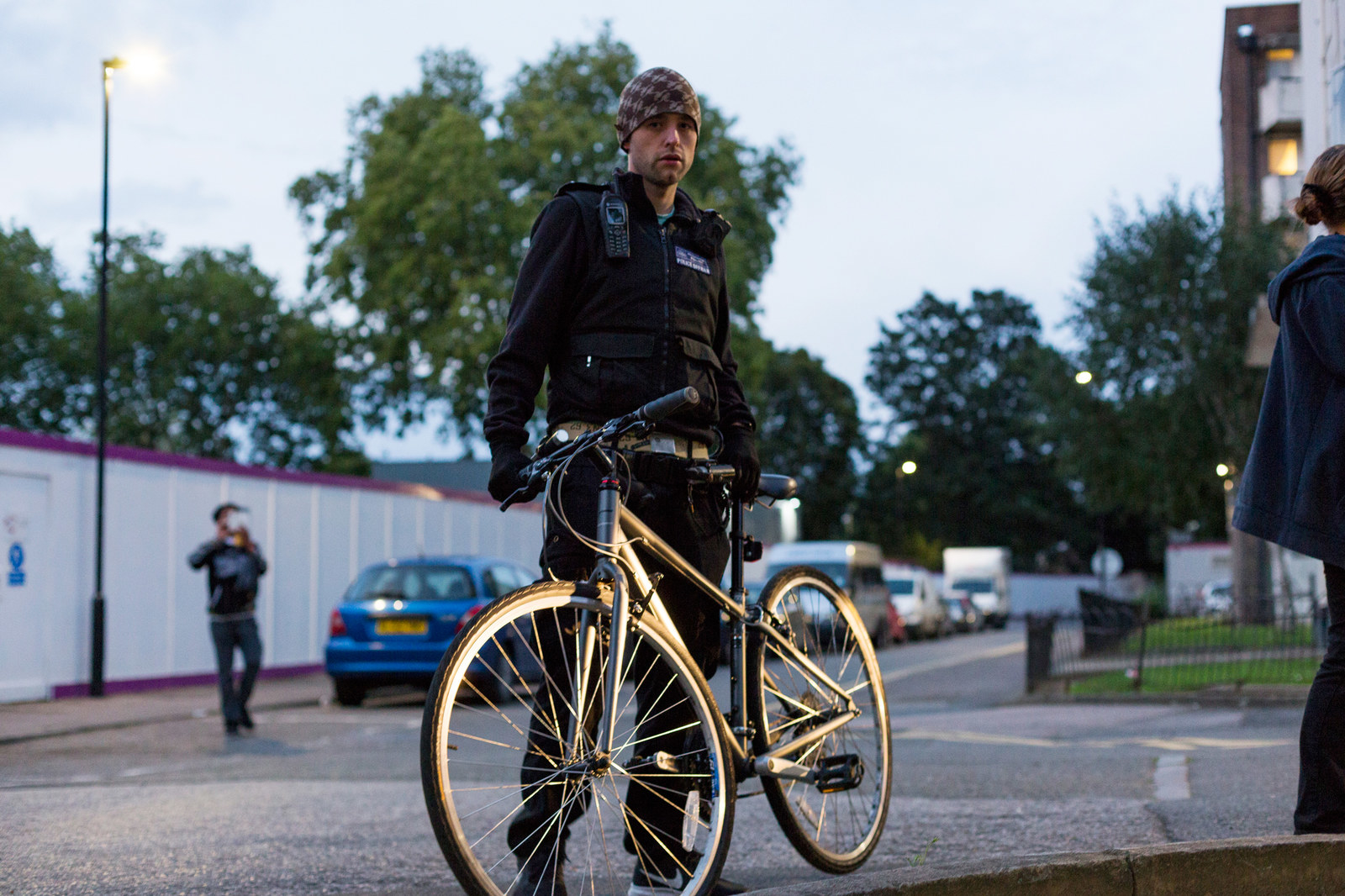
"Some of the lads here, if they've not got anything on them they'll stop and have a chat," he says. "It takes a long time to build up that rapport."
"But when someone's new in service they'll know, they'll smell it on them," his partner adds.
They search the teenager, and check out the frame number of his bike and the EMEI number of his phone to see whether either has been reported stolen. Everything is as it should be, and they uncuff him.
"Go to college mate, get a job," Williams says. "I don't want to see you again – don't get yourself in any bother."
He's offered similar guidance to some of the other young people that have been stopped tonight. The tone is friendly, genuine.
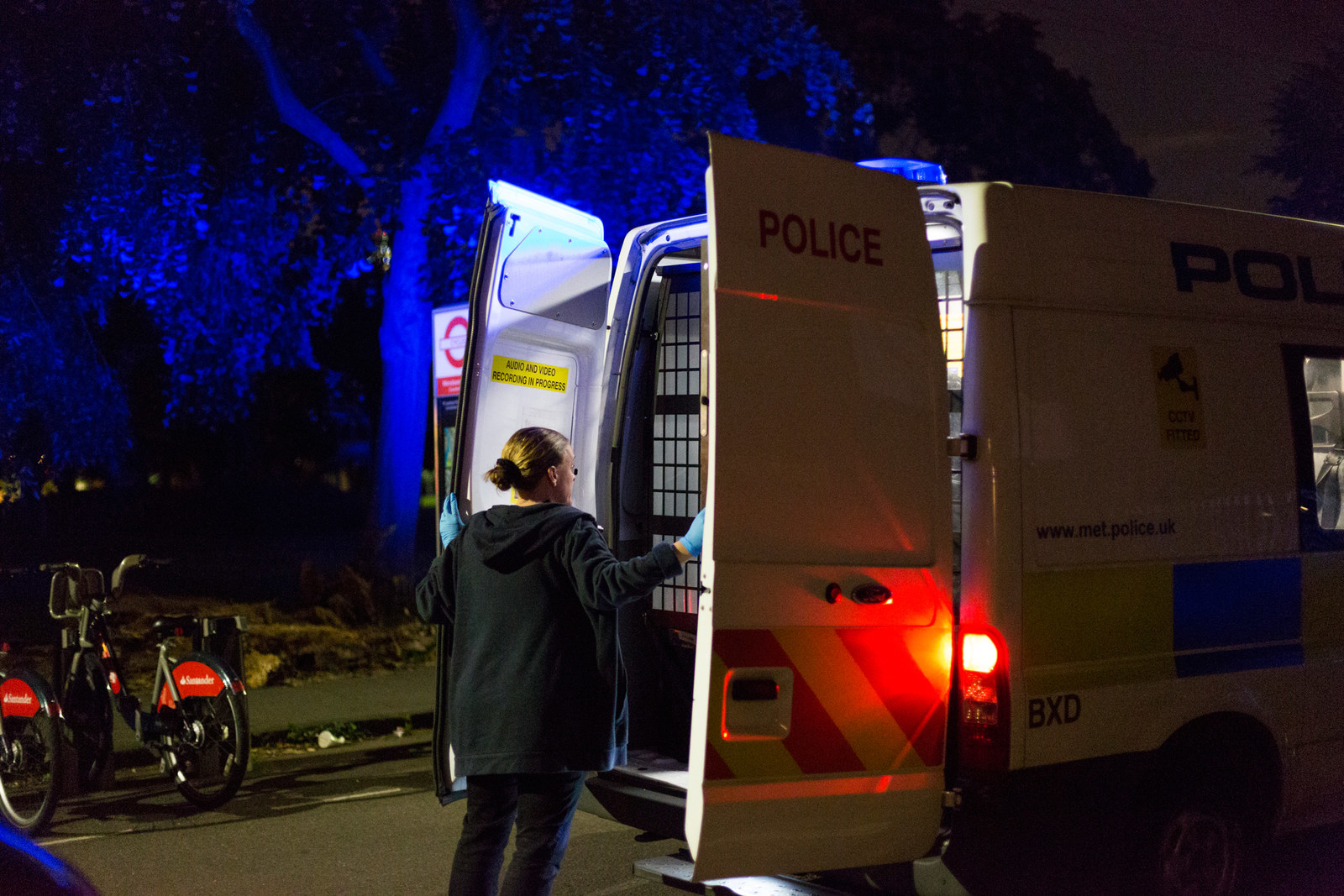
On the walls of the police station where the team are based, pictures of gang members are taped to the walls, together with their names, dates of birth, and known street names. They mostly range in age from their early teens to early thirties, but the majority are in their late teens.
One man who police arrest tonight for breaching his bail conditions is now a senior gang member. Williams says he first took him home to his mother when he was just a child and out at night associating with notorious Brixton gangs.
"It's about building up a bit of trust," he says, "talking to them all day every day. It's a joy when they do get a job and they do settle down. I'd love to say it happens a lot, but it doesn't."
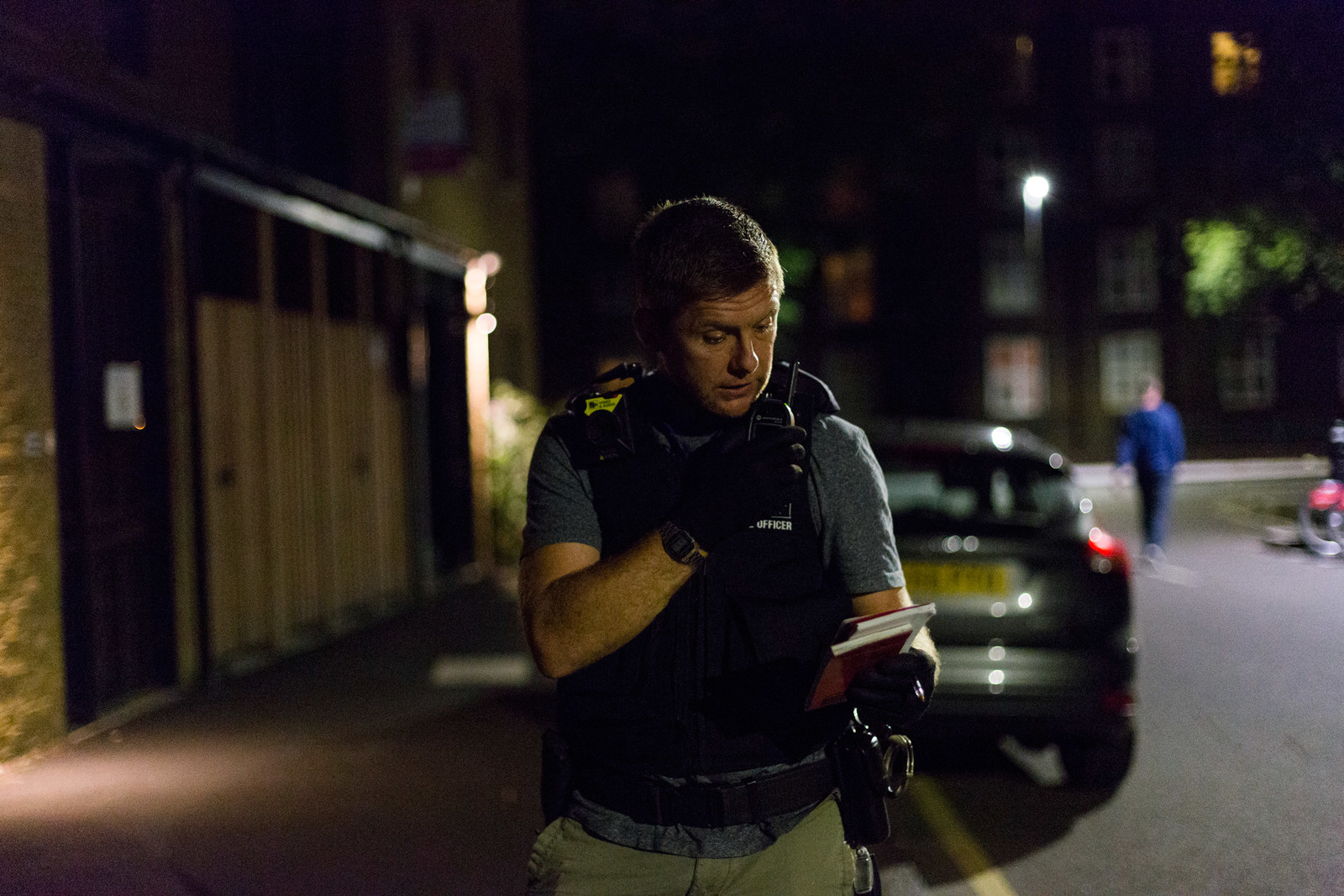
He adds: "It's things like that – joining the army, getting into boxing – that give them a way out. Or some just grow up."
Darkness has now fallen and it's on to another estate, where a large group are loitering by a wall. One of the boys – who looks quite young – shoots off on his Boris bike. The officers chase him, working on the assumption that he's sped away for a reason. However, they say, they know he could be a decoy, told to flee so that they will make exactly that assumption, allowing the others who are left behind to slip off into the night.
"Sometimes they're very, very compliant if they've got something on them that they don't want us to find – they're cool as a cucumber and then they've got a big knife," Williams' partner, who asked not to be identified, says. "Sometimes they see it as a game – they run because it's fun and they know that we'll chase. Some of the gangs are really switched on."
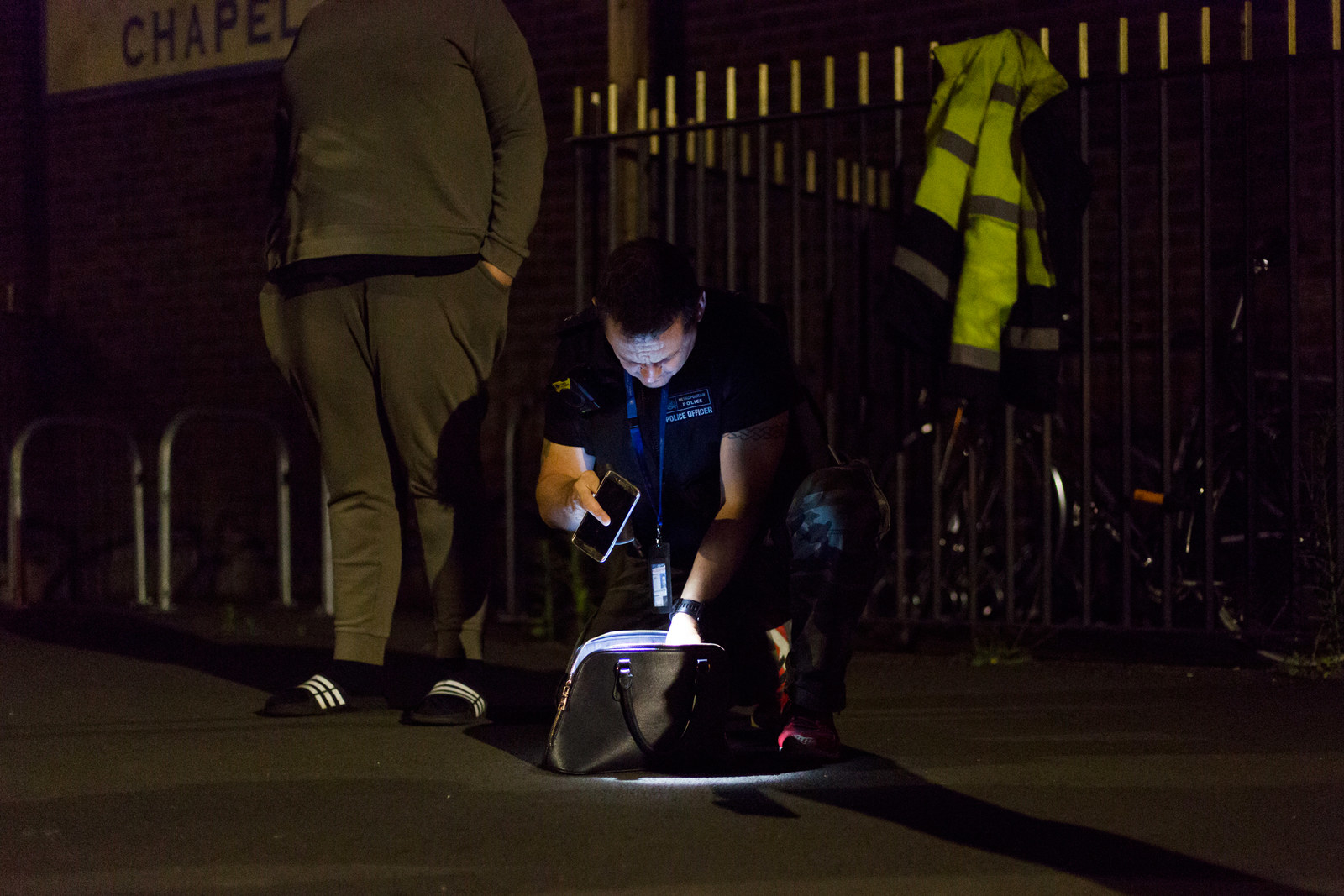
She jumps out of the car to chase the boy on foot, but on the bike he's quicker, and the car can't get down the rabbit warren of back alleys on the estate. This time, he gets away – and the officers can merely speculate as to whether he was carrying contraband or not.
Tonight, almost all of the people the team stopped were black. When asked about this, Williams says it's is simply down to the fact that most of the gang members in this area are black. South of here, in Croydon, he says, most of the known associates are white. But the gang demographics vary from borough to borough.
"It can make policing more difficult," he says, "because there is the perception that you're only stopping black youth. The reality is, we have more black youth."
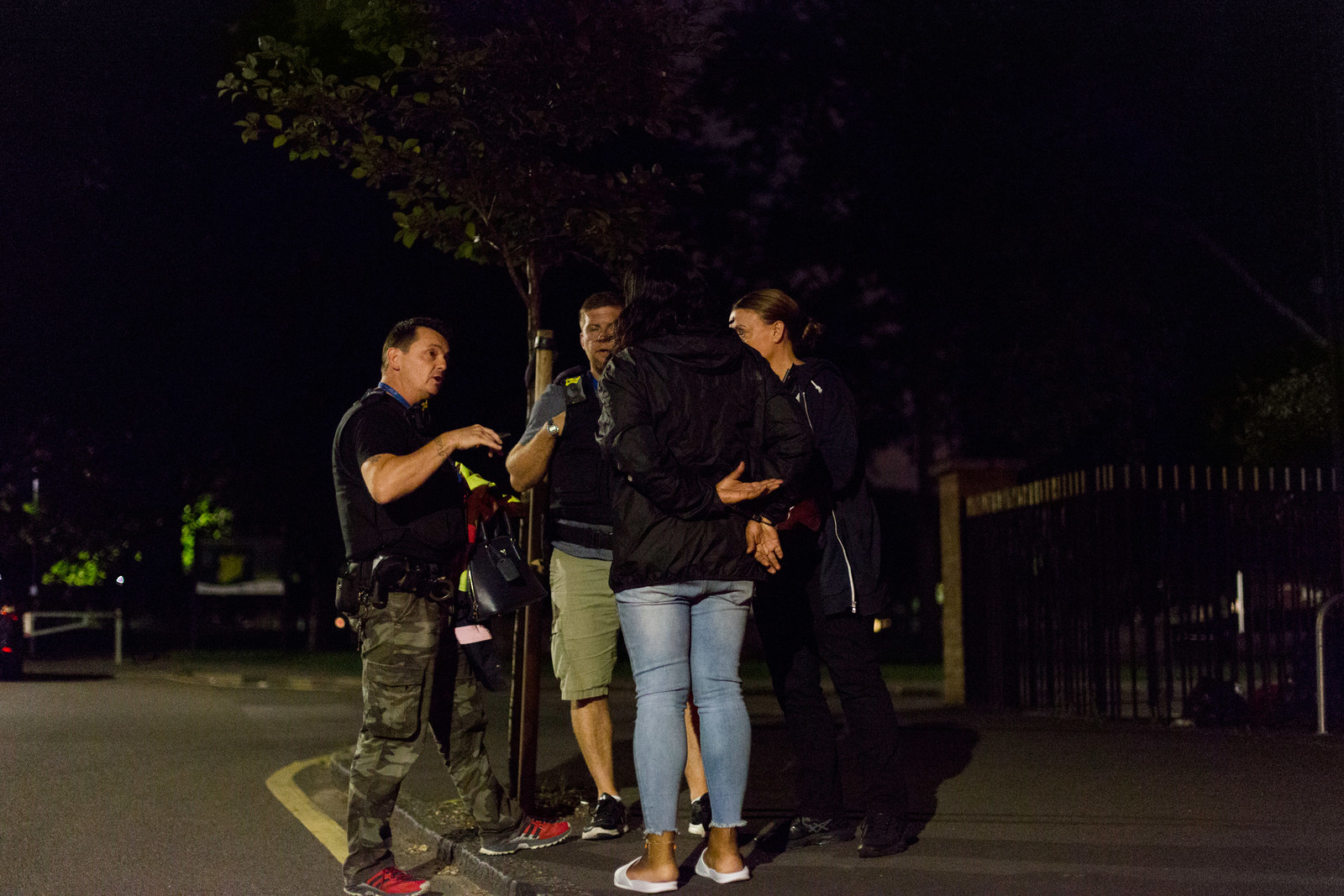
Next, the team patrol a park where one of the local gangs is known to hang out. They pull up alongside the relatively large group who are gathered there. Some have clearly been playing football and are changing from their boots back into their shoes, but others appear to be just hanging about.
The officers notice a woman slip off, almost undetected, around the back, and follow her on foot. She is carrying two bags and a man's jacket. They suspect she may have been asked to sneak away with anything incriminating when the group saw police arrive.
She has some keys in her hand, which she says belong to a friend. When asked why she was carrying so much stuff, she tells police that her friends had left without taking their things, so she had taken them for them. It is often women, the team say, who are asked to carry drugs and weapons, as gang members think they are less likely to be stopped.
The woman is handcuffed, and searched. She says she has nothing suspect on her, but she smells of cannabis. She also says she hasn't been searched before, but a check of the police computer reveals she has a long record. She is taken in for a strip-search, and admits she has cannabis on her – officers later found she was carrying nearly half a dozen snap bags in her bra, and the keys to the moped that she had in her hand turned out to belong to a notorious gang leader.
She is taken back to the station and two of the officers stay behind to process her through custody while the others head off to search her house and car for drugs. After a fingertip search, they find nothing.
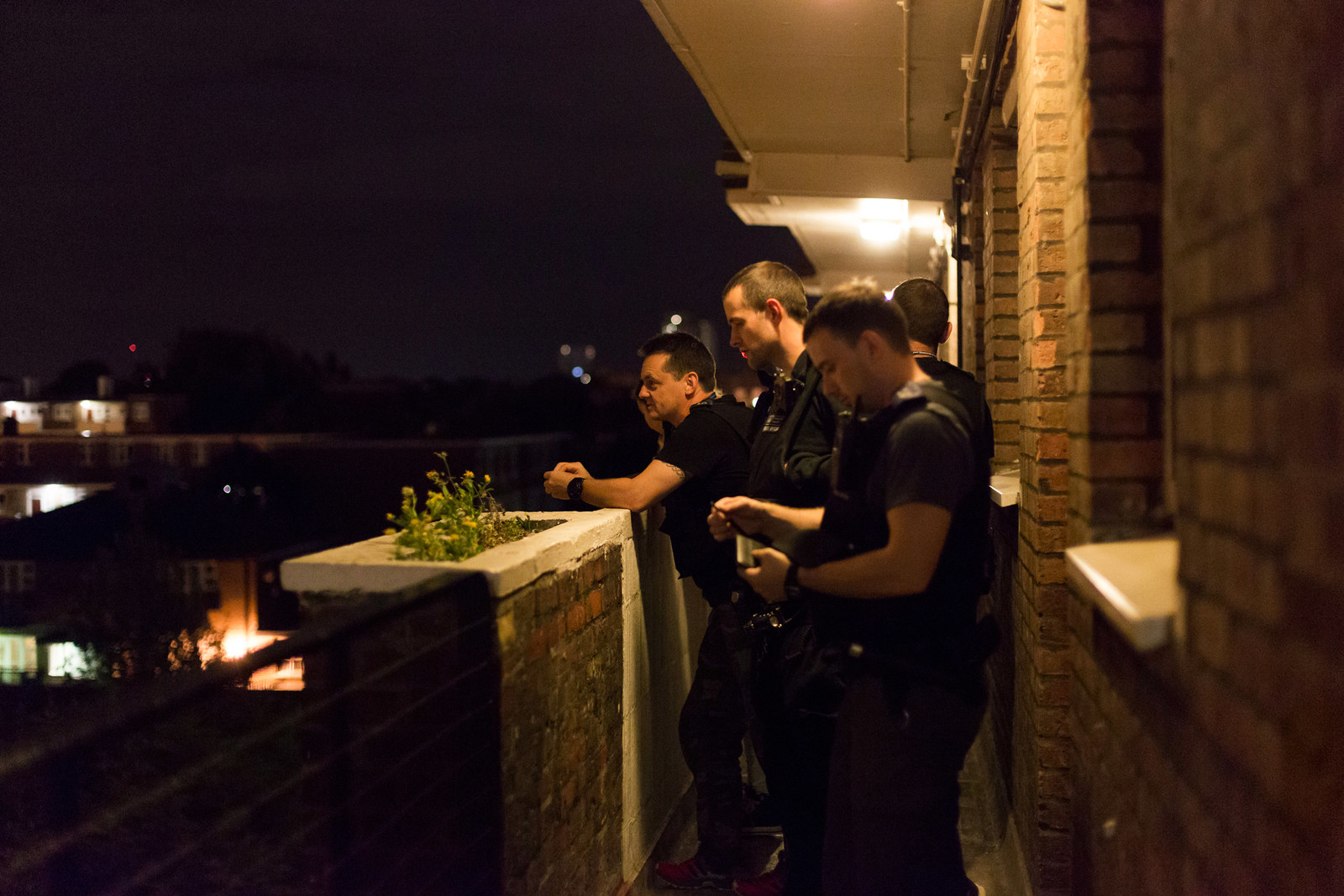
It's now 2am and the officers are back on the road. A car that was acting suspiciously has been pulled over for a stop. Everything appears to be in order and the team are just finishing up when three cars speed past in convoy, music blaring.
The team – now down to two cars – jump back in and spin around, chasing after them. The first squad car pulls one of the vehicles over, while the second, which is a little behind, tries to catch up with one of the other two. It is not an easy task – the cars have a head start and are out of sight.
PC Joe Broadfoot and his partner PC Darren Porritt have to use their judgment – they know where the cars are likely to have been coming from, where they may be going, the routes they are known to have taken in the past. They try their best but cannot trace either of the other two cars so loop back to help their colleagues, who have four suspects and a car to search between them.
The men they have stopped are known members of the Harlem Spartans, a gang based in Kennington, in the north of the borough. Although the police describe Harlem Spartans and 67 as "gangs", the groups are rap musical collectives (each describes itself as "a family") and have previously publicly denied that they are gangs.
As the search is ongoing the men from the other two cars turn up on foot and form a crowd to watch.
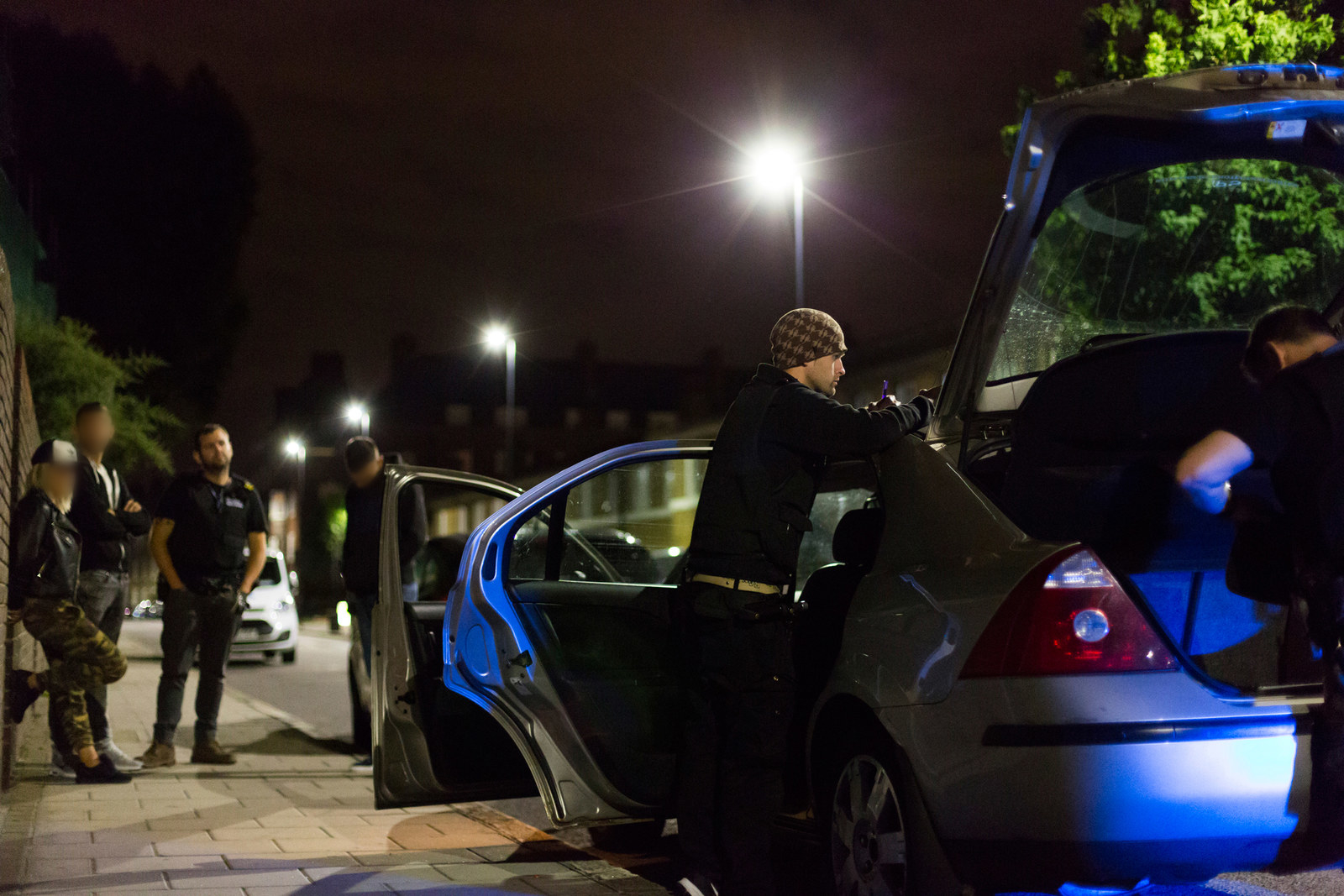
Although the officers are outnumbered, their approach is friendly – none of the men are handcuffed. A search of their car reveals a huge wad of £20 notes,but nothing more, and they are soon on their way.
Back at the police station, one of the officers flicks through his phone, which contains pictures of huge knives that the team, and those like them across London, have taken off the streets.
They want their work to be about prevention, building intelligence, taking knives off the streets before crimes are committed, but it is getting harder. Their team has been scaled back – from five or six cars to two or three. Increasingly they are diverted to response policing when there are not enough frontline officers available. Where once there was a task force for each part of the borough, now this one team cover all of the ground. In the past, teenagers who carry knives expected to see the team every day; they now see them less frequently.
One of the pictures on the officer's phone shows a large knife, its tip covered in blood. This, more than anything else, serves as a harsh reminder of what is at stake – what can happen when the team don't manage to intercept the knives in time.
UPDATE
This post has been updated to include the published views of those identified by the police as gangs about the way they are labelled.
